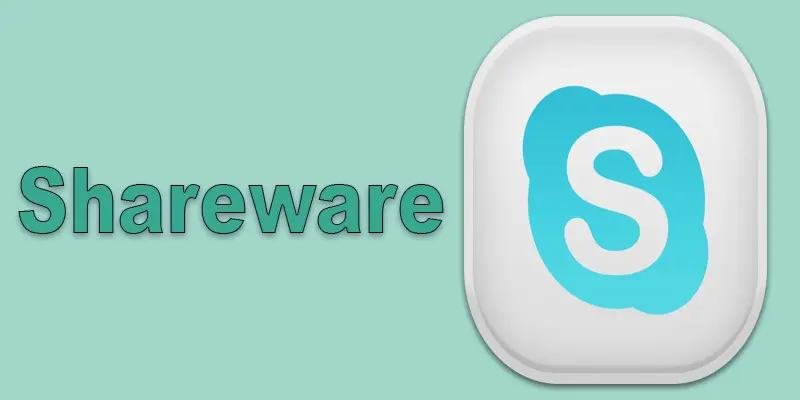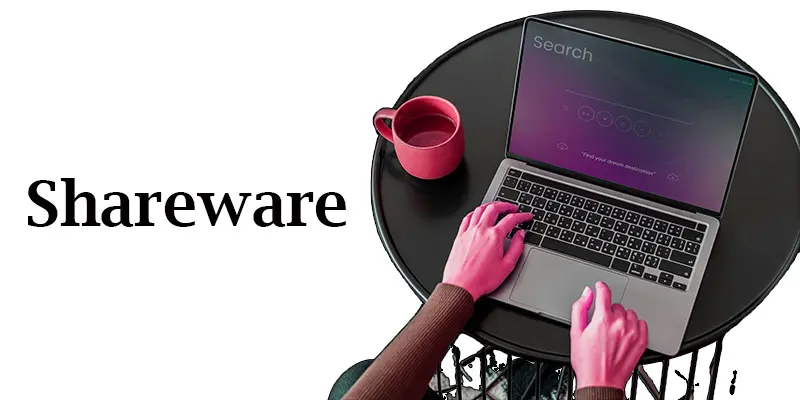What is a Shareware? Example, Types, Tips, Advantages and Disadvantages
Published: 15 Jan 2025
Shareware
Shareware is a unique software model that allows users to try programs before purchasing. Ever wondered why some downloads have limited features or trials? This approach eliminates the frustration of paying for tools that may not meet your needs by offering a sneak peek into the software’s functionality. It’s a revolutionary idea that’s been shaping user experiences since the 1980s.
What is Shareware?
A type of software that lets consumers test it out before buying is called shareware. You can test its functionality risk-free because it frequently has a trial term or limited features. This “try-before-you-buy” model helps users decide if the software meets their needs while supporting developers through paid upgrades.
Example of Shareware
- WinRAR: Trial version with limited features.
- Spotify: Free with ads, paid premium option.
- Adobe Acrobat Reader: Free basic version, paid for full features.
- Game Demos: Free trials for gaming software.
- CCleaner: Limited features in free version, premium upgrade available.
Shareware Definition
Shareware is a type of software that is available for free to try, typically for a limited period or with limited features. It allows users to test the software before deciding whether to purchase the full version. After the trial period ends, users are often required to pay for continued use or access to all features.
How does shareware work?
- Users get a free, limited version of the software.
- The software may have a trial period or restricted features.
- After the trial, users are prompted to buy the full version.
- This lets users test the software before committing to a purchase.
History of Shareware
In the 1980s, shareware was introduced as a revolutionary way for software developers to distribute their programs. It allowed users to try software before buying, a concept that changed how people approached software purchases. This shift made it easier for developers to reach a broader audience and for users to test software risk-free.
The shareware model gained popularity because it bridged the gap between expensive software and users unsure about investing in it. As the internet grew in the 1990s, shareware became even more widespread, offering a new way for developers to grow their customer base. This model still influences software distribution today.

Types of Shareware
Understanding the different types of shareware is essential when exploring it. Each type offers a unique way for users to interact with software before making a purchase, providing flexibility and options based on individual needs.
- Trialware
- Freemium
- Ad-supported Shareware
- Donateware
- Feature-Limited Shareware
- Time-Limited Shareware
- Subscription-based Shareware
Trialware
- Trialware allows users to try software for a limited time.
- Full functionality is available during the trial period.
- After the trial, the software may stop working or limit features.
- It helps users test the software before deciding to purchase.
- Trial periods usually last between 7 to 30 days.
Freemium
- Freemium offers basic features for free.
- Users can upgrade to a paid version for advanced features.
- Common in apps, online services, and games.
- Free version is often limited in functionality or has ads.
- Users are encouraged to pay for an enhanced experience.
Ad-supported Shareware
- Ad-supported shareware is free software with ads displayed.
- Users can access the full software without paying.
- Ads generate revenue for developers.
- Common in mobile apps, games, and free desktop software.
- Ads may interrupt user experience or be present on the interface.
Donateware
- Donateware is free software with an option for users to donate.
- Developers encourage voluntary donations for continued access or support.
- Common in open-source or smaller software projects.
- Users can enjoy full features without payment.
- Donations help support ongoing development and maintenance.
Feature-Limited Shareware
- Feature-limited shareware offers a free version with restricted features.
- Users can access basic functionality, with advanced features locked.
- Users must pay to unlock the full set of features.
- Common in software like photo editors and productivity tools.
- Encourages users to upgrade for a more complete experience.
Time-Limited Shareware
- Time-limited shareware is free to use for a set period.
- After the trial period ends, users must pay to continue using the software.
- Common in software like video editing tools and games.
- Provides full functionality during the trial period.
- Encourages users to decide whether to purchase before time runs out.
Subscription
- Subscription-based shareware requires a recurring fee for access.
- Users pay periodically (e.g., monthly or annually) to use the software.
- Provides continuous updates and support during the subscription.
- Common in cloud services, streaming apps, and software tools.
- Users can cancel the subscriptions at any time.

Advantages and Disadvantages of Shareware
Shareware offers a unique way to access software, providing both benefits and challenges for users. While it can be a great way to try software before purchasing, there are also potential drawbacks to consider.
Advantages
- Allows users to try the software before buying.
- Cost-effective for users who only need basic features.
- Helps developers reach a wider audience.
- Can be a great way to discover useful tools.
- Provides access to high-quality software at a lower price.
Disadvantages
- Limited features or functionality in free versions.
- May include interruptions like ads or pop-ups.
- Trial periods may expire, leaving users without access.
- Some shareware may contain bugs or stability issues.
- Users may feel pressured to purchase after the trial period.
Shareware Security Concerns
Shareware can pose security risks if not downloaded from trusted sources. Many shareware programs are distributed with bundled software, which can include malware or unwanted applications. It’s essential to download from reputable websites to minimize exposure to these threats.
Another concern is that some shareware programs may request unnecessary permissions, such as access to personal data. Users should always review the permissions before installing and ensure that antivirus software is active to detect any potential security risks during installation.
10 Important Tips for Using Shareware Safely
- Always download shareware from trusted websites to avoid malware.
- Check reviews and ratings before installing any shareware.
- Use antivirus software to scan the shareware for threats.
- Be cautious of software asking for unnecessary permissions.
- Only provide personal information if absolutely necessary.
- Keep your software updated to avoid security vulnerabilities.
- Avoid downloading cracked versions of shareware.
- Test shareware in a virtual machine or on a secondary device.
- Set reminders to uninstall trialware before it expires to avoid charges.
- Read the terms and conditions to understand the software’s limitations.
Shareware vs Freeware
| Shareware | Freeware |
| Free for a limited time. | Completely free. |
| Limited functionality or trial period. | Full access to all features. |
| May require payment for updates. | Regular updates are free. |
| Try before you buy. | Always free to use. |
| Feature-limited or time-limited. | No restrictions. |
| Often encourages purchase or donation. | No monetary incentives. |
Conclusion about Shareware
So guys, in this article, we’ve covered shareware in detail. From understanding how it works to exploring its advantages and disadvantages, I hope you now have a better idea of whether shareware is right for you. Personally, I recommend trying shareware for software you need on a trial basis, but always ensure you’re downloading from trusted sources. If you’re ready to explore more, go ahead and give shareware a try!
FAQS – Shareware Software
Another name for shareware is “trialware.” It refers to software that is available for free for a limited time or with restricted features until you decide to purchase the full version.
Shareware can be safe if downloaded from trusted sources. To reduce security threats, it’s crucial to use antivirus software and make sure you’re downloading from reliable sources.
Yes, shareware typically requires payment after the trial period ends if you want to continue using the full features. Some shareware may offer limited functionality even after the trial, but full access often requires purchasing the software.
Shareware is a great option if you want to test software before committing to a purchase. If the trial features meet your needs, it can be a cost-effective solution, but always check if the software’s full features justify the price.
If you don’t pay for shareware after the trial period, the software may stop working, or its features will be limited. You may also be prompted to purchase or upgrade to continue using the full version.
Learning about shareware helps you make informed decisions when trying or purchasing software. It also helps you understand the benefits, risks, and the best ways to use shareware safely and effectively.

- Be Respectful
- Stay Relevant
- Stay Positive
- True Feedback
- Encourage Discussion
- Avoid Spamming
- No Fake News
- Don't Copy-Paste
- No Personal Attacks

- Be Respectful
- Stay Relevant
- Stay Positive
- True Feedback
- Encourage Discussion
- Avoid Spamming
- No Fake News
- Don't Copy-Paste
- No Personal Attacks





